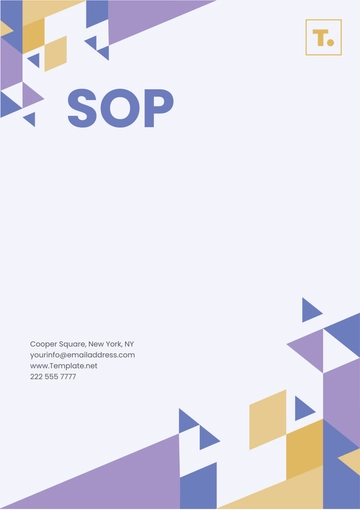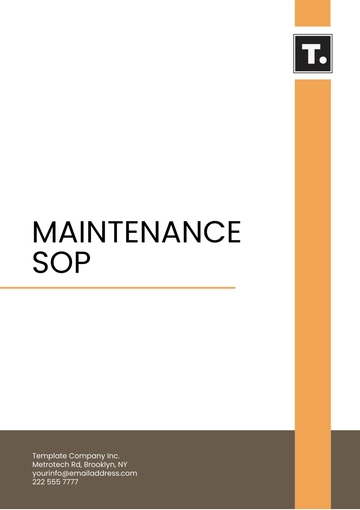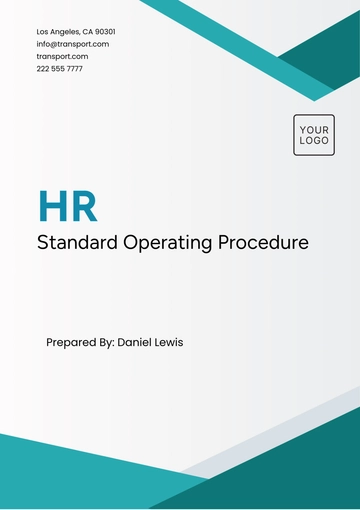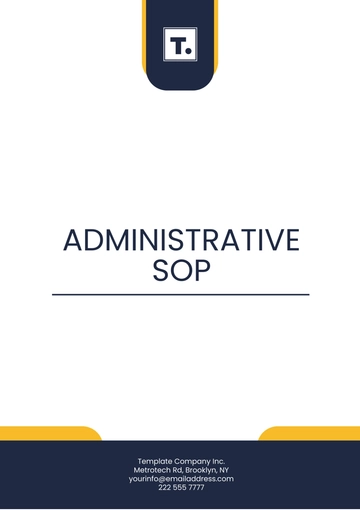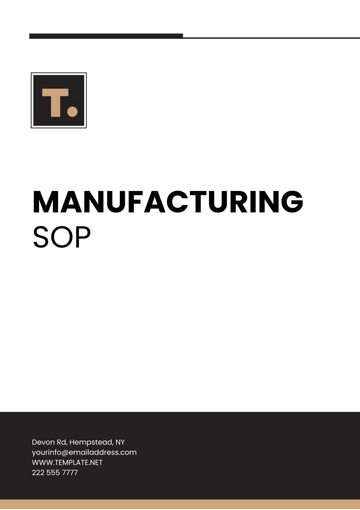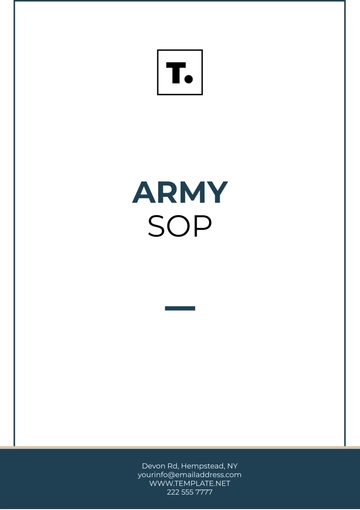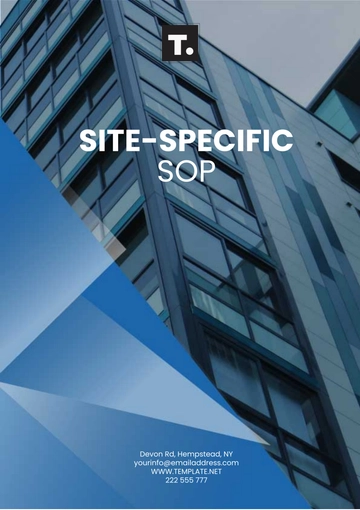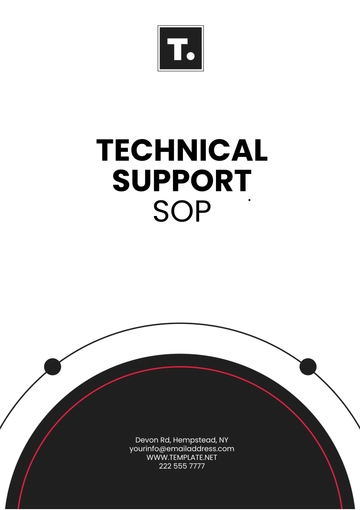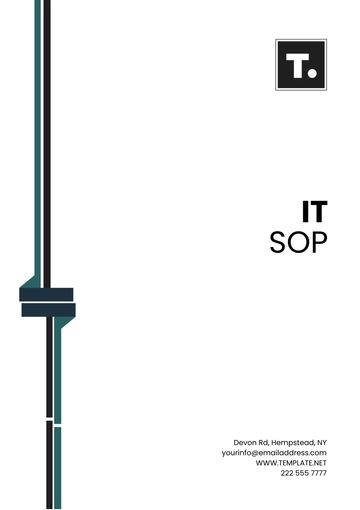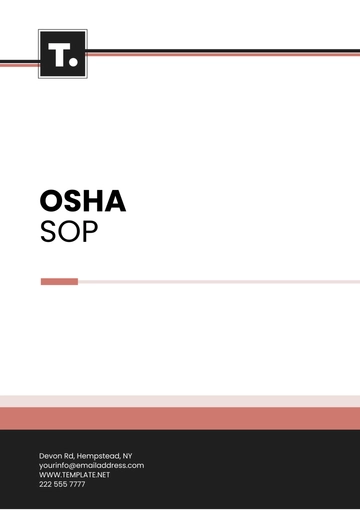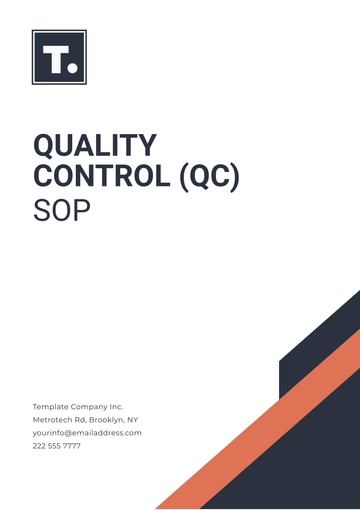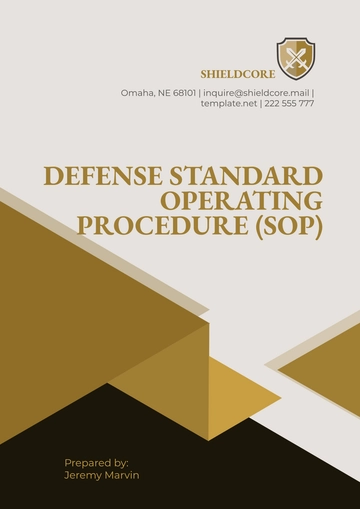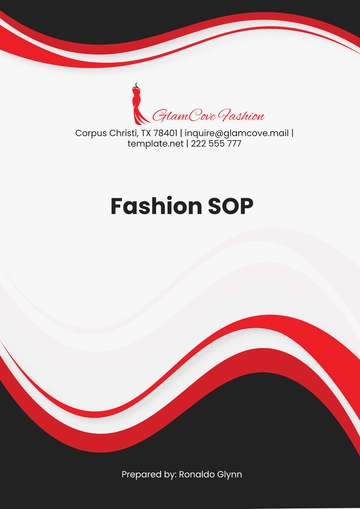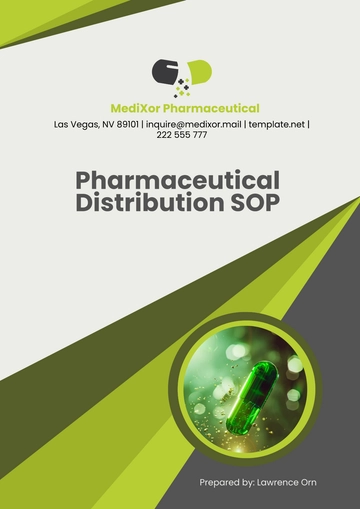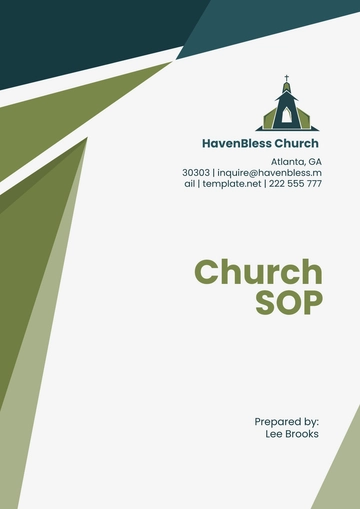Free Pharmaceutical Distribution SOP
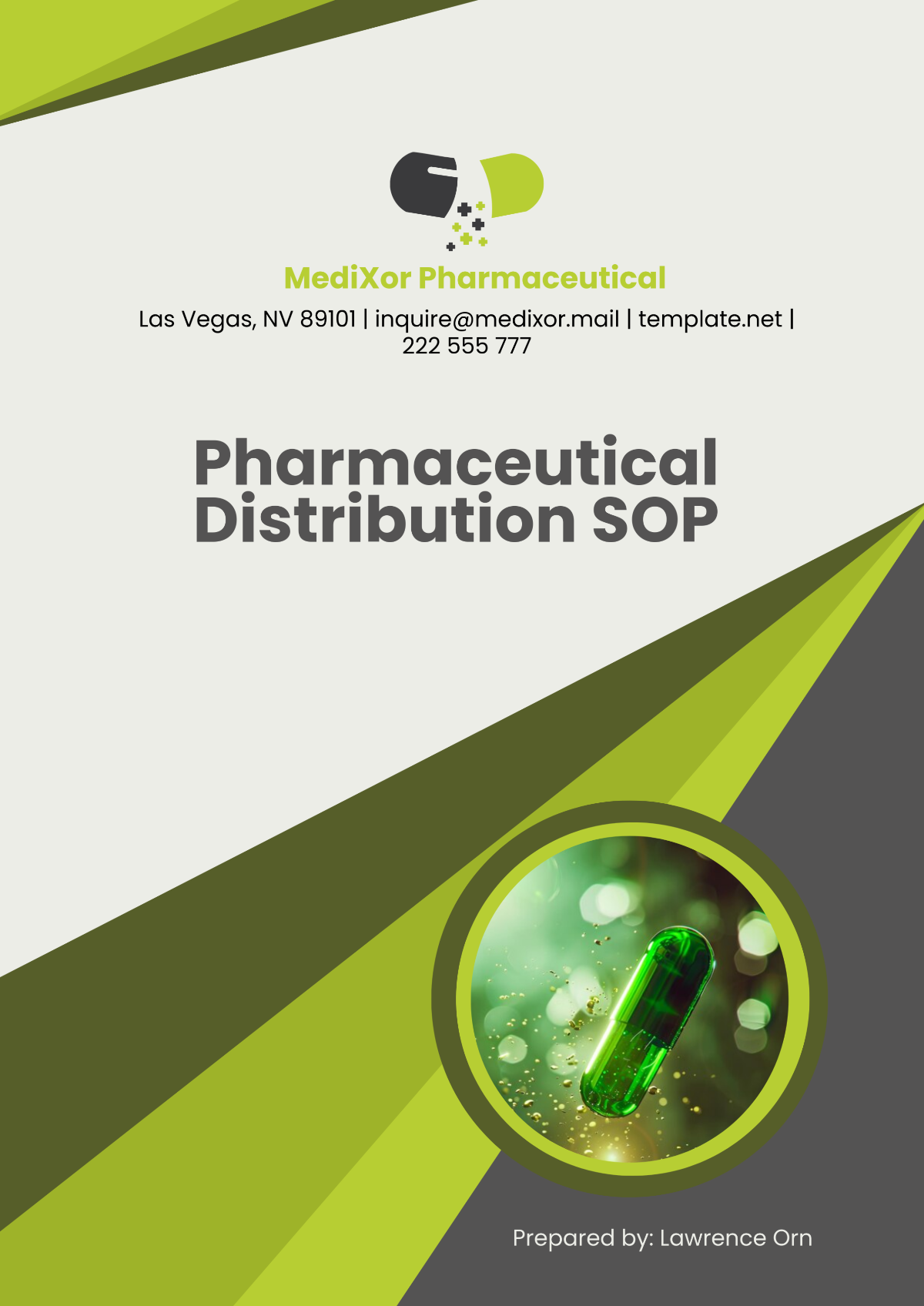
I. Introduction
1.1 Purpose
The purpose of this Standard Operating Procedure (SOP) is to provide a structured framework for the distribution of pharmaceutical products, ensuring that [Your Company Name] follows industry best practices, legal guidelines, and regulatory standards throughout the distribution chain. This SOP outlines the procedures and responsibilities necessary to safeguard the quality, integrity, and safety of pharmaceutical products from the time they are received at the warehouse until they reach the end customer or healthcare provider. The SOP also ensures the efficient handling of pharmaceuticals to meet demand while minimizing risk factors that could jeopardize product quality.
1.2 Scope
This SOP encompasses all activities related to the distribution of pharmaceutical products within [Your Company Name], including procurement, warehousing, handling, transportation, and final delivery to clients or healthcare providers. It applies to all facilities and employees involved in the pharmaceutical distribution process, as well as third-party logistics providers. The procedures described are intended to ensure that products are stored, handled, and transported under controlled conditions to maintain their efficacy, safety, and integrity. This SOP also covers the requirements for compliance with relevant national and international regulatory bodies, such as the U.S. Food and Drug Administration (FDA), the European Medicines Agency (EMA), and other relevant organizations.
1.3 Objectives
The main objectives of this SOP are as follows:
Compliance with regulations: To ensure that pharmaceutical products are distributed in accordance with local, regional, and international laws, regulations, and guidelines such as Good Distribution Practice (GDP) and Good Manufacturing Practice (GMP).
Product quality maintenance: To ensure that the quality of pharmaceuticals is maintained at every stage of the distribution process, preventing damage, contamination, or degradation that could compromise patient safety.
Operational efficiency: To streamline distribution activities, reduce delays, minimize errors, and enhance the overall speed of service, ensuring that customers receive their orders in a timely manner.
Risk mitigation: To prevent the occurrence of counterfeiting, theft, or contamination throughout the supply chain.
Documentation and traceability: To ensure that records of distribution activities are maintained, allowing for traceability and accountability throughout the supply chain.
II. Definitions and Abbreviations
2.1 Definitions
Good Distribution Practice (GDP): A set of guidelines for the proper storage, transportation, and handling of pharmaceutical products to ensure their quality and integrity are preserved throughout the supply chain. GDP guidelines help safeguard the efficacy of products by minimizing the risk of contamination, damage, or theft during distribution.
Cold Chain: A specialized logistics process that ensures temperature-sensitive pharmaceutical products are stored and transported at a consistent, specified temperature range to maintain their stability, potency, and safety. Cold chain management is critical for biologics, vaccines, and certain injectables.
Batch Number: A unique alphanumeric identifier assigned to a specific batch of pharmaceutical products during the manufacturing process. The batch number allows the tracking and traceability of products from production to distribution and is essential for quality control and regulatory compliance.
Expiration Date: The date set by the manufacturer by which the pharmaceutical product should be used. After this date, the product may no longer be effective or safe to use. Distribution of expired products is strictly prohibited and subject to regulatory penalties.
2.2 Abbreviations
Abbreviation | Definition |
|---|---|
GDP | Good Distribution Practice |
SOP | Standard Operating Procedure |
QA | Quality Assurance |
QC | Quality Control |
FDA | U.S. Food and Drug Administration |
EMA | European Medicines Agency |
III. Roles and Responsibilities
3.1 Distribution Manager
The Distribution Manager plays a crucial role in overseeing the daily operations of the pharmaceutical distribution process. They are responsible for ensuring the overall efficiency, compliance, and integrity of the distribution network. This includes coordinating with other departments, maintaining up-to-date knowledge of regulatory changes, and ensuring all distribution practices align with company and industry standards. They are also responsible for managing relationships with third-party logistics providers and suppliers, ensuring that contractual obligations are met, and maintaining optimal stock levels. The Distribution Manager is accountable for monitoring the performance of the distribution process through the analysis of KPIs (Key Performance Indicators) and taking corrective action as necessary to resolve any issues that arise.
3.2 Quality Assurance (QA) Personnel
QA personnel are responsible for overseeing the implementation of quality control standards in the distribution process. Their duties include conducting regular audits of storage facilities, transportation methods, and inventory to ensure compliance with GDP and GMP standards. QA staff also ensure that products are stored and transported in accordance with specified conditions, such as temperature control for cold chain products, and maintain records of these inspections. They play a vital role in investigating any incidents of non-compliance or product quality issues, initiating corrective and preventive actions (CAPA) to mitigate risks and improve processes. The QA team is essential for maintaining the company’s reputation for quality and safety.
3.3 Warehouse Staff
Warehouse staff are responsible for the physical handling of pharmaceutical products within the distribution center. They are tasked with receiving, storing, and picking products according to customer orders, ensuring that products are properly handled, packaged, and labeled before being shipped. Warehouse staff must adhere to strict guidelines regarding cleanliness and the maintenance of controlled environments to prevent contamination and ensure the safety of the products. In addition to these responsibilities, warehouse staff must regularly conduct inventory checks, update records accurately, and report any discrepancies or damages in the stock to the Distribution Manager or QA personnel.
3.4 Transportation Personnel
Transportation personnel are responsible for the safe and timely delivery of pharmaceutical products to clients, healthcare providers, or end-users. Their duties include loading and unloading goods, ensuring that shipments are properly secured and protected during transit, and maintaining proper temperature control for cold chain products. Transportation staff must also document and track the movement of products from the warehouse to their final destination, providing evidence of delivery and any deviations from the expected conditions. In cases of accidents, delays, or temperature excursions, transportation personnel must immediately notify the Distribution Manager and QA personnel, who will initiate the necessary investigation.
IV. Equipment and Materials
4.1 Required Equipment
Temperature-controlled storage units: These units, such as refrigerated and frozen storage rooms, are essential for maintaining the quality of temperature-sensitive products, including vaccines, biologics, and some antibiotics.
Insulated containers for cold chain products: These containers ensure that products transported outside of a climate-controlled warehouse remain within the required temperature range. They are often used for shipments to clinics, hospitals, or other healthcare providers.
Barcode scanners for tracking inventory: These devices enable the efficient tracking of products throughout the distribution process, from receipt to final delivery. The use of barcodes helps reduce human error and enhances inventory management.
Security seals for tamper-evident packaging: To prevent theft or tampering, security seals are affixed to product packaging before transportation. This ensures that any unauthorized access to the products is detectable and prevents fraudulent activities.
4.2 Calibration of Equipment
To maintain the integrity of pharmaceutical products, it is critical that all temperature-monitoring equipment and storage units are regularly calibrated. Temperature sensors, data loggers, and refrigerators used for cold chain storage must be calibrated on a regular basis to ensure accuracy. The calibration process should be conducted by a qualified third-party service provider or internal personnel who have received proper training. Calibration should be performed at least bi-annually or more frequently if required by regulatory authorities or if equipment malfunctions are detected. Calibration records must be documented, signed, and kept on file for a minimum of [5] years to comply with industry standards.
4.3 Materials
Material Type | Purpose |
|---|---|
Tamper-evident seals | To ensure product integrity during transit, tamper-evident seals are applied to all packaging to detect any unauthorized access or handling. |
Pallets and containers | Used to securely store and transport products, ensuring they remain stable and protected from external elements. |
Insulated packaging | Essential for transporting cold chain products to maintain the required temperature ranges during shipping. |
V. Distribution Process
5.1 Receipt of Goods
The receipt of goods is the first critical step in the distribution process. Upon delivery to the warehouse, all incoming products must be inspected to ensure that they meet the specifications outlined by the supplier. Warehouse staff should verify that the quantity of the delivered goods matches the purchase order or shipping documents. They must also inspect the condition of the packaging for signs of damage or tampering. If any discrepancies or damage are found, the products should be quarantined immediately, and a report should be generated for QA personnel to conduct a thorough investigation. Products that fail to meet quality standards must be returned to the supplier or disposed of in accordance with company policy and regulatory requirements.
5.2 Storage
5.2.1 General Storage Conditions
Proper storage conditions are essential for maintaining the quality and integrity of pharmaceutical products. The warehouse must be organized to prevent cross-contamination between different product categories and to provide easy access for inventory management. Storage areas should be climate-controlled to ensure that the environmental conditions, including temperature, humidity, and ventilation, remain within the recommended ranges for the specific types of products stored. Regular checks of temperature and humidity levels must be conducted at specified intervals, and any deviations from acceptable ranges should be addressed immediately.
5.2.2 Cold Chain Storage
Cold chain products, including vaccines, biologics, and certain injectable drugs, require special handling and storage conditions. These products must be stored in refrigerated units that are capable of maintaining a consistent temperature range of [2°C] to [8°C]. Temperature monitoring systems should be in place to ensure continuous tracking, and temperature excursions should be immediately addressed. Cold chain products must also be transported using vehicles equipped with refrigeration units to ensure that temperature-sensitive products are maintained within the required range throughout the entire distribution process.
5.3 Order Processing
Order processing is a critical step in ensuring that pharmaceutical products are delivered to customers in a timely and accurate manner. When an order is received, it is entered into the company’s inventory management system, and the appropriate products are picked from the warehouse. During this stage, the batch number, expiration date, and product quantity must be verified to ensure that the correct items are being shipped. All packaging must be sealed securely, and a packing slip must be included with each order to provide a detailed list of the products being shipped. Products that are out of stock should be flagged for backorder, and customers should be notified of any delays.
5.3.2 Labeling
The labeling of pharmaceutical products is an essential part of the distribution process, ensuring that products can be properly identified and tracked throughout the supply chain. Labels must include key information such as the product name, batch number, expiration date, storage instructions, and regulatory information. For international shipments, additional regulatory labels, such as language-specific instructions or import/export documentation, may be required. All labels must meet the standards set by relevant regulatory bodies and must be legible, accurate, and securely attached to the packaging.
5.4 Transportation
Transportation is the final stage of the distribution process, where the product is moved from the warehouse to its destination. During transportation, pharmaceutical products must be handled with care to prevent damage or contamination. For cold chain products, temperature-controlled vehicles must be used, and temperature logs should be monitored to ensure compliance with storage conditions. The transportation team is responsible for ensuring that products are delivered according to schedule and that any delays or issues are immediately communicated to the Distribution Manager.
In the transportation phase, safety and security are paramount to preventing any risks such as theft, damage, or contamination. All vehicles used for pharmaceutical transportation must be equipped with security features like GPS tracking, secure locking mechanisms, and monitoring systems to prevent unauthorized access. Additionally, when transporting cold chain products, temperature data loggers should be used to continuously track the product’s temperature throughout transit, and this data should be reviewed upon delivery to confirm compliance with the required temperature range.
Product Type | Transportation Condition | Temperature Range | Monitoring Method |
|---|---|---|---|
General Pharmaceuticals | Dry and secure packaging | 15°C to 25°C | GPS tracking and delivery logs |
Cold Chain Products | Temperature-controlled units | 2°C to 8°C | Temperature data loggers |
VI. Quality Control and Assurance
6.1 Inspections
Quality assurance inspections are a key component of the pharmaceutical distribution process. Inspections ensure that all products, both stored and transported, meet the established quality standards and comply with relevant regulations. At each stage of the distribution process, whether during receipt of goods, storage, or transportation, inspections must be conducted. Inspections should cover the physical condition of the packaging, product integrity, batch number verification, and adherence to proper storage conditions such as temperature and humidity control. Any deviations from the required standards must be documented and corrective actions must be taken promptly.
For example, warehouse staff should inspect the storage areas weekly to ensure that the temperature and humidity conditions are within the specified ranges. Transportation vehicles should also be inspected before and after every shipment to confirm that they are in proper working condition and equipped with the necessary controls for transporting pharmaceutical products, particularly cold chain items.
6.2 Audits
Audits are conducted periodically to ensure that the pharmaceutical distribution process complies with internal policies, regulatory requirements, and industry best practices. Internal audits should be carried out at least bi-annually, with additional spot audits conducted as needed to address specific concerns or areas of risk. These audits will evaluate processes, documentation, equipment calibration, and employee training to ensure that all elements of the distribution process are in compliance. Non-conformities identified during audits must be addressed through corrective actions, and a follow-up audit may be scheduled to confirm that the necessary improvements have been implemented.
Audit findings should be reviewed and discussed with relevant stakeholders, and any required changes to the SOP should be proposed and approved by management. Ensuring continuous improvement based on audit findings helps maintain a high standard of pharmaceutical distribution and quality control.
6.3 Incident Management
Incidents during the distribution process, such as product damage, loss, or contamination, must be promptly reported to Quality Assurance personnel. Any deviation from established procedures, including issues with temperature excursions, damaged packaging, or compromised products, must be documented with detailed incident reports. QA personnel will initiate an investigation into the root cause of the incident, evaluating factors such as storage conditions, transportation mishandling, or inadequate packaging.
After completing the investigation, QA will determine the appropriate corrective and preventive actions (CAPA) to minimize the risk of similar incidents in the future. These may include changes to procedures, equipment, or training. Depending on the severity of the incident, affected products may need to be quarantined and, in some cases, recalled from the market.
VII. Record Keeping
7.1 Types of Records Maintained
Proper record keeping is essential for maintaining compliance and ensuring product traceability throughout the pharmaceutical distribution process. The following records must be maintained:
Product receipt logs: These logs document the details of incoming shipments, including product name, batch number, quantity, supplier details, and any inspections performed upon receipt.
Inventory records: These records track the stock of pharmaceuticals stored in the warehouse, including the batch number, expiration date, and quantity. Regular inventory counts should be conducted to prevent discrepancies and ensure the availability of products.
Temperature monitoring logs: For cold chain products, temperature logs should be maintained to track the conditions during storage and transportation. These logs must include date, time, temperature readings, and any deviations or excursions.
Transportation records: Documentation of delivery schedules, transport conditions, and proof of delivery should be maintained for each shipment. This includes GPS tracking data, temperature logs for cold chain products, and signatures from recipients upon delivery.
All records should be stored in a secure and organized manner to ensure easy retrieval and compliance with regulatory requirements. Digital records are preferred but must be backed up regularly to prevent data loss. Paper records should be scanned and stored electronically for long-term preservation.
7.2 Retention Period
Pharmaceutical distribution records must be retained for a minimum of [10] years. This includes all records related to the receipt, storage, handling, and transportation of pharmaceutical products. Retaining records for this period ensures that the company can provide full traceability for products in case of an audit, regulatory review, or recall. When the retention period expires, records should be securely disposed of according to company policy and in compliance with data protection regulations.
VIII. Training
8.1 Training Requirements
All employees involved in the pharmaceutical distribution process must undergo training to ensure they understand their roles and responsibilities and adhere to industry standards. This training must cover the following areas:
Good Distribution Practice (GDP): Employees must understand the key principles of GDP, including proper storage, handling, and transportation of pharmaceutical products.
Cold Chain Management: Specialized training is required for employees involved in the handling and transportation of temperature-sensitive products to ensure they understand how to maintain proper storage conditions.
Product Identification and Documentation: Employees must be trained to correctly identify products, including verifying batch numbers, expiration dates, and product labels. They should also be familiar with the necessary documentation requirements for each phase of the distribution process.
Incident Management and Reporting: Employees should know how to recognize and report incidents that could compromise product quality, and they should be familiar with the steps involved in investigating and rectifying such incidents.
Training should be conducted annually, and all new employees should undergo initial training before beginning their roles. Training records should be maintained for each employee, and refresher courses should be provided as needed.
8.2 Evaluation of Training
To ensure the effectiveness of training programs, all employees must complete a post-training assessment that tests their understanding of the material. The results of these assessments should be reviewed by managers to identify any knowledge gaps or areas of improvement. In addition, supervisors should conduct periodic evaluations of employees’ performance in the field to ensure that training has been successfully implemented in daily operations.
Training evaluation should also include feedback from employees to improve the content and delivery of future training sessions. Continuous improvement in training programs is crucial to maintaining high standards of pharmaceutical distribution and employee competence.
IX. Key Performance Indicators (KPIs)
9.1 Distribution Efficiency
The following KPIs are used to evaluate the effectiveness and efficiency of the pharmaceutical distribution process:
Order Fulfillment Rate: This measures the percentage of orders that are processed and delivered on time, without errors. A high order fulfillment rate indicates that the distribution process is running efficiently and that customer demand is being met promptly. The target for order fulfillment should be [98%].
Inventory Accuracy: This KPI tracks the accuracy of the inventory records compared to the actual physical stock. It helps identify discrepancies between recorded and actual stock levels, which can impact product availability and distribution planning. The target for inventory accuracy should be [99%].
9.2 Quality Metrics
To ensure the safety and integrity of pharmaceutical products, the following quality metrics should be tracked:
Temperature Compliance Rate: This measures the percentage of time that cold chain products are stored and transported within the required temperature range of [2°C] to [8°C]. The target for temperature compliance should be [100%], with no deviations.
Incident Resolution Time: This measures the average time it takes to resolve any distribution-related incidents, such as delays, temperature excursions, or damaged products. The target resolution time should be less than or equal to [48] hours.
Tracking these KPIs helps ensure that the distribution process is operating smoothly and meeting both operational and quality goals. Regular analysis of these metrics allows for the identification of areas for improvement and helps the company maintain high standards in pharmaceutical distribution.
X. Appendix
10.1 KPI Data
KPI Metric | Target | Actual (Q1 2050) |
|---|---|---|
Order Fulfillment Rate | 98% | 96.5% |
Inventory Accuracy | 99% | 99.2% |
Temperature Compliance | 100% | 99.8% |
Incident Resolution Time | ≤ 48 hrs | 36 hours |
10.2 Document References
GDP Guidelines: WHO Technical Report Series No. 957.
Cold Chain Logistics Standards: ISO 23412:2020.
XI. Approval and Review
Role | Name | Signature | Date |
|---|---|---|---|
SOP Author | [Your Name] | 01/2050 | |
QA Manager | [Your QA Manager] | 01/2050 | |
Distribution Manager | [Your Distribution Manager] | 01/2050 | |
CEO | [Your CEO] | 01/2050 |
- 100% Customizable, free editor
- Access 1 Million+ Templates, photo’s & graphics
- Download or share as a template
- Click and replace photos, graphics, text, backgrounds
- Resize, crop, AI write & more
- Access advanced editor
Ensure compliance and streamline your processes with the Pharmaceutical Distribution SOP Template from Template.net. This editable and customizable document outlines standard procedures for safe and efficient distribution. Use the AI Editor Tool to tailor it to your specific operational requirements.



